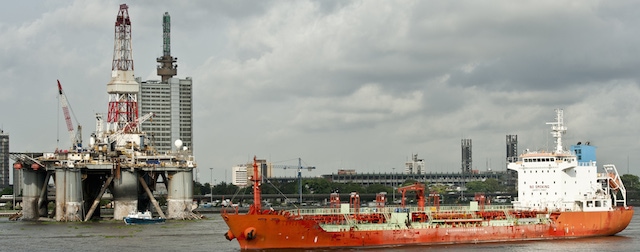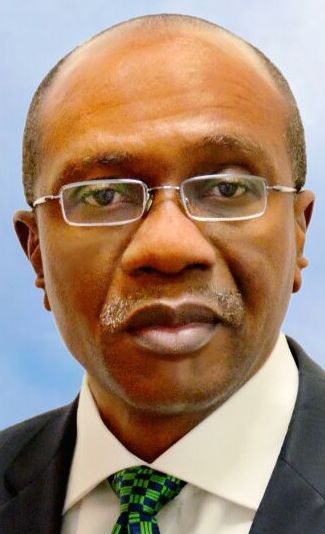COUNTRY REPORT | NIGERIA

Nigeria lacks one key element for stellar growth: a power sector commensurate with its prospects.
Nigeria is known worldwide for its economic potential. Its people, though, are still awaiting the translation of that potential into reality. The country has experienced bouts of growth—for example, between 2007 and 2013, when its economy grew by an average of 7% a year. That is significantly higher than the average 5.2% increase in sub-Saharan Africa’s real GDP over the same period. But what the country needs is sustainable and inclusive growth.
Nigeria has virtually everything it requires to reach that goal: a large population of around 170 million, a growing middle class, and oil and gas resources that make it the biggest oil producer in Africa and a leading member of the Organization of Petroleum Exporting Countries. The country also has enough land and natural resources to support agricultural development both for domestic consumption and for export. In April, Nigeria overtook South Africa as the largest economy on the continent. It is now the 26th-biggest economy in the world, with a GDP of about $260 billion.
A recent Standard Chartered Consumer Aspirations study on emerging and affluent consumers within certain emerging markets found that 86% of Nigeria’s middle-class consumers expect their incomes to rise over the next five years. The consumption
pattern of middle-income Nigerians—focusing on high-end technology and housing improvements—suggests increased demand for foreign goods, leading in turn to rising import bills.
POWERING UP

But this rosy picture just foregrounds Nigeria’s main constraint to growth: the near-comatose state of the power sector. With power generation currently at about 4000 megawatts, only 10% of Nigeria’s power demand is met.
For Abiola Rasaq, head of research at money management firm Associated Discount House (ADH) in Lagos, Nigeria, as the biggest economy in Africa, must improve its infrastructure. “While this bigger size of the Nigerian economy is expected to further attract foreign direct investment, as it increases the spotlight on the economy, Nigeria will need to have required minimum infrastructures—just as the experience of China has shown over the last three decades,” he says.
Filling this supply gap is the key goal of the government’s Power Sector Reform program, which seeks to privatize the sector, while the state plays a regulatory role. It began by unbundling the Power Holding Company of Nigeria into six generating
companies, 11 distribution companies and one transmission company. In 2013 the government sold the distribution and generating companies to investors.
Some market-watchers believe that the reform program is the panacea for Nigeria’s hobbled economic performance. “In a country of 170-plus million people hungry for a better life, we see power reform as a turning point for the economy,” Melissa Cook, founder and managing director of emerging markets investment firm African Sunrise Partners, explains. “This should stimulate growth and add to the diversification of Nigeria’s economy. It will also reduce currency imbalances, as goods that are now imported can be made at home.”
But power sector reform faces several challenges, ranging from inadequate gas supply to antiquated wiring and transformers. “It’s time to take Nigerian Power Reform seriously,” Cook wrote in the report entitled, Nigerian Power: The Way Forward. “When the power gets turned on, everything could change.”
DOMESTIC BANK BACKING
The reforms have opened the door for increased investment in the power sector by Nigerian banks, according to ADH’s Rasaq. The privatization of power assets “opened up opportunities for power sector financing, as 75% of the assets acquired by private consortia in 2013 were funded through debt [largely locally],” he says. Overall, the power sector represents an estimated 4% of Nigerian banks’ credit portfolio, he notes. And despite previous concerns, large-cap domestic banks have indicated appetite for as much as 10% exposure to the power sector over the medium term, according to Rasaq.
For now, though, Nigerian banks are overweight on oil and gas, which represents about 20% of their portfolios. Although in the past they concentrated on short- to medium-term lending in the downstream subsector, now they “have increased appetite for upstream and medium-stream oil and gas,” says Rasaq. As they deepen their knowledge of upstream finance and reserve-based lending, they may remain overweight on this sector, he adds.
Nigerian banks are boosting financing in the power and oil and gas sectors because they now have increased capacity for “big-ticket transactions,” following recapitalization exercises in 2005 and further capital raising by most banks in 2007, says Rasaq. Large banks like Zenith and First Bank of Nigeria have capacity to fund transactions in excess of 80 billion naira ($500 million), he adds. In addition, loan clubs and syndications are increasingly being used in funding big-ticket transactions in the country, as banks gain confidence in syndication arrangements and collateral management structures.
IMPACT OF REFORMS
Reform efforts will begin to have a significant impact in as early as five years, says Cook. Within this period, the sector should have resolved its gas supply shortages, generation shortfalls, excess transmission losses and distribution bottlenecks up to a level of capacity that, hopefully, will approach the 40 gigawatt (100% of demand) target, according to Cook.
Resolving these issues should encourage more investors to back projects embedding power close to the distribution companies, boosting available capacity in higher-density areas. This should bring costs down for manufacturers, service companies and consumers—and might unleash entrepreneurial activity that isn’t possible right now.
The reform program is opening up several other investment and trade opportunities in Nigeria as well. Such equipment suppliers as GE and Siemens “are already well entrenched,” according to Cook. Opportunities are also evolving for marketers of electrical equipment, ranging from transformers, sensors, substation equipment and—most important—prepaid meters, says Cook. An important development under the reforms is the change to a new billing system based on prepaid meters, which should reduce corruption and increase revenue for power companies.
Cook is bullish on the Nigerian power reform project. “The quality of companies and investors involved in the sector is very high. Bringing in the private sector can make a huge difference in this type of situation,” she notes. “Nigeria isn’t the easiest place to do business, but people who have been willing to go, spend time doing their own research and building strong networks of local contacts, can see the potential—and, hopefully, can benefit from it.”
GFmag.com Data Summary: Nigeria |
|||
|---|---|---|---|
Central Bank: Central Bank of Nigeria |
|||
|
International Reserves |
$36.3 billion |
||
|
Gross Domestic Product (GDP) |
$264.2 billion |
||
|
Real GDP Growth |
2010 8.0% |
2011 7.4% |
2012 6.6% |
|
GDP Per Capita—Current Prices |
$1,603.6 |
||
|
GDP—Composition By Sector* |
agriculture: |
industry: |
services: |
|
Inflation |
2010 13.7% |
2011 10.8% |
2012 12.2% |
|
Public Debt (general government |
2010 15.5% |
2011 17.2% |
2012 18.4% |
|
Government Bond Ratings (foreign currency) |
Standard & Poor’s BB- |
Moody’s N/A |
Moody’s Outlook N/A |
|
FDI Inflows |
2009 $8,650 million |
2010 $6,099 million |
2010 $8,915 million |
* Estimates Source: GFMag.com Country Economic Reports, IMF, CIA, UNCTAD
Central Bank Pledges To Use Development Finance Model
The Central Bank of Nigeria will henceforth play up its development finance role—to catalyze an inclusive growth process that can absorb the nearly two million people that are entering the country’s job market each year. To achieve this, it will begin gradually reducing interest rates, do what it can to help channel credit toward sectors with job creation potential, raise output and reduce the nation’s import bills.

Despite strong GDP growth over the decade to 2013, the jobless rate hit a high of 23.9% in 2012, up from 13.9% in 2000, and much higher among youths. A new paradigm is needed for tackling unemployment in Africa’s most populous nation.
Given this scenario, the central bank “cannot afford to sit idly by and concentrate only on price and monetary stability,” Godwin Emefiele, new governor of the central bank, said at the start of his tenure in June.
The Central Bank of Nigeria will focus on credit allocation and direct intervention in such sectors as power, agriculture, SMEs, oil and gas, and health. In agriculture, the bank’s intervention will aim to improve productivity in areas with high domestic demand, where opportunities exist to improve local supply and reduce FX risk. These include the production of rice, fish, wheat and sugar. These four commodities constitute “a huge proportion of our food import bill of 1.3 trillion naira ($8.3 billion) annually,’’ said Emefiele. The commodities will receive 60% of the commercial agricultural credit scheme in order to effect the bank’s stated productivity aims and ultimately reduce the country’s reliance on agricultural imports.
In the power sector, the central bank will provide funds at concessionary rates to targeted investments. It will support investments in gas-to-power infrastructure to deliver gas to existing and new power plants, as well as investments in renewable energy.
The bank’s intervention in the oil & gas sector will aim to cut the nation’s importation of refined petroleum products, which consumes about 35% of Nigeria’s annual import bill. It will support the establishment of small-scale modular refineries that can serve some domestic markets. And it will collaborate with government ministries to secure investments to fund Nigeria’s portion of future joint ventures with international oil companies, by, for example, raising such funds through international capital markets.



